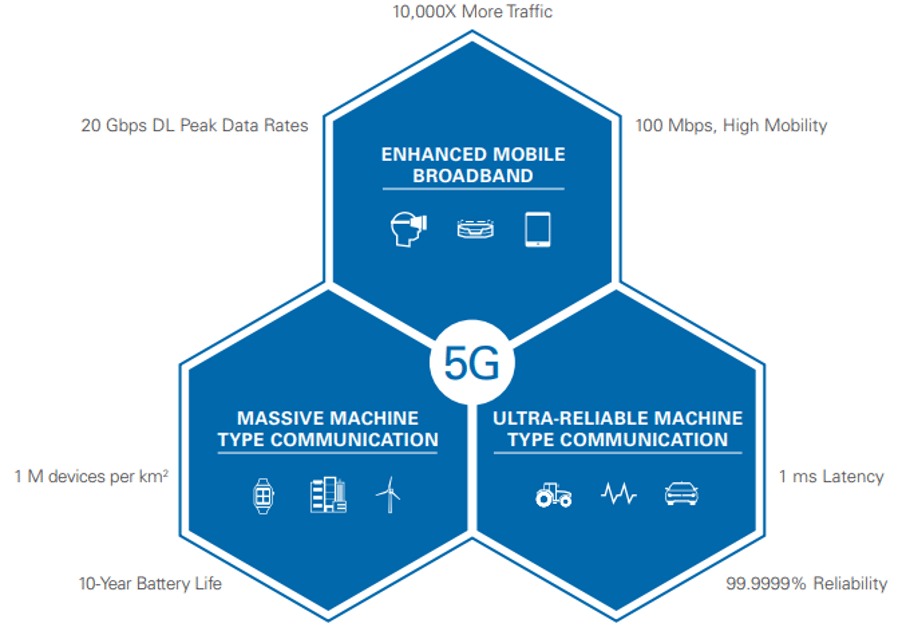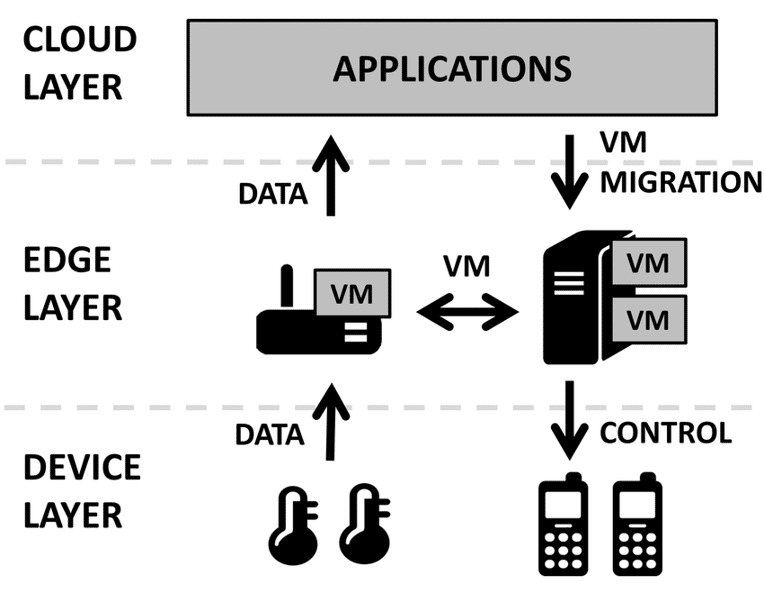IoT cellular networks have many advantages, including wide coverage, low cost, easy scalability, remote management, security, etc., making them the preferred choice for many IoT applications ......
For years, cellular networks have supported us in staying connected through phone calls, instant messaging software and social media. But cellular technology has evolved to do more than just connect us to our contacts more easily. It has become an integral part of cross-industry operations, from healthcare to agriculture and manufacturing.
While the decision to implement the cellular IoT is simple, creating an enterprise-level network is much more complex. Connecting the many parts that make up the network can be challenging, and we must ensure that each of them operates efficiently to meet the needs of the enterprise.
In this article, we'll explore how cellular IoT works, its components, and some of what you need to know before implementing it into the enterprise.
How IoT Cellular Connectivity Works
IoT cellular connectivity works by connecting devices to the base stations to which they transmit information. For example, the antennas seen on city rooftops are the base stations of a cellular network. A group of base stations is called a RAN (Radio Access Network).
The RAN connects the device or user to the network of an operator, also known as a mobile network operator (MNO), such as China Mobile, Vodafone, AT&T, MTN and SignTel, which are well-known providers worldwide. The operator's core network then links the device to an external network, such as another network or the cloud. The system also allows carriers to connect to each other.
IoT cellular networks have many advantages, including wide coverage, low cost, easy scalability, remote management, security and more.
Different Types of IoT Cellular Networks
Today, cellular technology is still evolving and changing; over time, various iterations of network technology have been developed, each with its own advantages and uses. Some businesses may even use more than one type of network to meet their needs. Below, we take a look at each of the most common types used in the cellular IoT:
2G, 3G and 4G
2G and 3G have contributed to the rapid growth of IoT, primarily because of their low cost, wide coverage, and mature global infrastructure. But legacy technologies can't always keep up with changing needs. As new technologies such as 4G and 5G mature, we have the ability and reason to phase out 2G and 3G, and both are already slowly being phased out.
For now, 4G is still widely available. The technology allows devices to connect wirelessly by connecting cellular devices using the LTE radio standard. 4G is a great network for the Internet of Things because it provides reliable wireless connectivity, enabling activities such as wireless monitoring, remote device activation and connecting various devices.
LTE-M
LTE-M (Long Term Evolution Machine Type Communications) is compatible with 4G and second generation LTE Cat.0 technologies, reducing operator capital expenditure (CapEx). This advanced form of connectivity is explicitly designed to support IoT activities, especially for mobile IoT devices. Its advantages include low latency (higher uplink and downlink speeds), adoption of eSIM (support for wireless updates), long battery life and low power consumption.
LTE-M is ideal for low-power applications requiring moderate throughput. With latency in the millisecond range, it provides real-time communication for time-critical applications. LTE-M is ideal for medium throughput applications that require low power consumption, low latency or mobility, such as asset tracking, wearables, medical, POS and home security applications.
NB-IoT
NB-IoT (Narrowband IoT) is a technology that helps organizations participate in the Internet of Things with low power consumption and data usage advantages. Like LTE-M, it is compatible with 4G networks and offers similar benefits. In addition to low energy consumption, NB-IoT offers long battery life (even over a decade), high scalability and reliable connectivity.
However, unlike LTE-M, NB-IoT does not support wireless updates and offers higher latency transmission. In addition, it requires specific hardware, which can increase operator capital expenditures. The technology is well suited for applications that require low bandwidth, rely on long-lasting batteries and need to transmit only small amounts of data, such as sensors, meters, and environmental sensors such as weather and wind.
LTE-1
LET-1 belongs to a category of 4G LTE technologies. It was standardized in 2018 and serves IoT-specific use cases.LTE-1 offers robust coverage and connectivity reliability because it can be used anywhere 4G is available. Its large 20Mhz band makes it ideal for networks that require higher bandwidth. In addition, it offers large amounts of data (10Mb/s maximum speed for downlink and 5Mb/s for uplink), making it suitable for a variety of IoT use cases, including video streaming or aggregated data transmission.
5G
While 4G represents the current state of the IoT in many ways, 5G represents the future. As more and more cellular providers move to 5G, more opportunities are emerging in the cellular IoT space. 5G takes 4G technology to a new level by using significantly higher bandwidth and shorter wavelengths to transmit data faster, farther and more accurately than ever before.
5G is a better choice for IoT networks because it supports IoT activities such as industrial automation, smart cities and manufacturing development that allows for more remote processes. The LTE-M and NB-IoT technologies we mentioned above will continue to be supported in 5G.

Source: Moniem-Tech
Benefits of IoT cellular connectivity
Cellular IoT combines the efficiency of IoT with the benefits of cellular networks. The inherent security and consistent connectivity of cellular technology makes it the perfect foundation for IoT technology. The functionality of IoT technology depends on its reliability, and for many use cases, such as the safe operation of power plants or sensitive government processes, the loss of connectivity can be catastrophic.
Cellular IoT devices often transmit sensitive or critical data, so security is critical. As a result, cellular IoT networks have a wide range of security options, including VPNs, firewalls and other security protocols. Where cellular network infrastructure already exists, cellular IoT is also more affordable than many other connectivity options. Users only need to pay for the data they use by choosing the right configuration or using a customized plan.
IoT cellular connectivity has a wide range of applications in a variety of industries, but all networks share a few basic elements. These foundations are
1. Distributed architecture
The IoT is becoming increasingly complex, with more and more devices connected. Distributed architectures may be needed to support high-capacity networks and facilitate data transfer and processing between thousands of devices. Distributed architectures include the edge and the core.
Edge computing is a type of distributed computing that brings computing closer to the data source. Not all data is processed in a centralized network, and some data can be processed in a local environment, such as a computer, IoT gateway or edge server. This enables fast analysis and reduces latency and bandwidth consumption. Even in a distributed architecture, enterprises can rely on their core infrastructure for centralized connectivity and analytics. Processing can be done centrally or at the edge of the network.
2. Bandwidth
Network bandwidth is the maximum limit of data that can be transmitted by the network, and these transmissions can occur over wired or wireless channels. Bandwidth is usually measured in terms of frequency, most commonly in kilobits, megabits and gigabits.
Many people confuse bandwidth with network speed. Unlike network speed, bandwidth does not refer to how fast a network can transmit data. Instead, it has to do with the amount of data it can transmit in a given time. Higher bandwidth means more data can be transferred in less time, while lower bandwidth carries less data and takes more time to transfer. NB-IOT and LTE-M are suitable for lower bandwidths, while LTE-1 is suitable for higher bandwidths.

Source: ResearchGate
3. Power consumption
In 2016, a software bug in Nest Learning Thermostats drained the batteries of thousands of Nest devices, leaving users unable to adjust the temperature during cold winter months. While the incident was quickly resolved, the story speaks volumes about the importance of battery life and power consumption for any IoT network.
Non-compliant devices will be the source of all kinds of potential crises. Some devices have a battery life of up to 10 years, but knowing the limits of each device is critical to avoiding network disruptions due to power outages. Battery power is especially important if the devices are distributed over a large area. In addition to device batteries, it is important to choose the right cellular technology in this case. For example, NB-IoT is best suited for transmitting small amounts of periodic data.
4. Security
Security is one of the main issues surrounding IoT networks, and both infrastructure and personal devices need to be protected. Cellular IoT security uses systems or a combination of technologies to protect the network and its devices from cyber threats. Although cellular technology is one of the most secure connectivity technologies, it is still vulnerable to attacks.

Today, cyber threats against IoT networks are on the rise. In the first half of 2021 alone, 1.5 billion IoT breaches occurred, proving that no IoT is immune. Because of their dual vulnerabilities, cybercriminals see IoT networks as easy targets, making it even more important to protect them.
There are multiple solutions available to protect cellular IoT networks. These include hardware, software or cloud-based security solutions, as well as many connectivity management platforms that specialize in protecting networks and network devices.
5. Reliability and Reach
Reliability is critical for IoT networks of any size, regardless of goals or lifespan. Downtime means that the IoT cannot function as the "Internet" and devices cannot connect. Reliability is especially important in industries where human life or safety is at stake, such as security monitors, medical devices, health trackers and rescue drones. Network failures in these applications can result in death or injury. Even less critical items such as analytics rely on reliability to receive the data needed to perform operations.
Coverage is another factor to look at, as devices may need to communicate both indoors and outdoors in even hard-to-reach places (such as deep underground). Coverage is especially important for devices in hard ground conditions or in transit. Cellular networks are relatively reliable; therefore, they are suitable for even the most complex IoT projects.
6. Cost
IoT requires complex infrastructure to support its operation. In addition, different IoT providers serve different industries, each with its own tariff and pricing system. Analysts predict that the average price paid for a cellular connection will drop to $1 per year by 2025. Despite this dramatic reduction, we still need to consider ongoing maintenance costs. These additional costs include adding other software, such as connection management and security tools. That's why it's important to choose the most cost-effective tool.
Article source: FirstPoint



Comments6